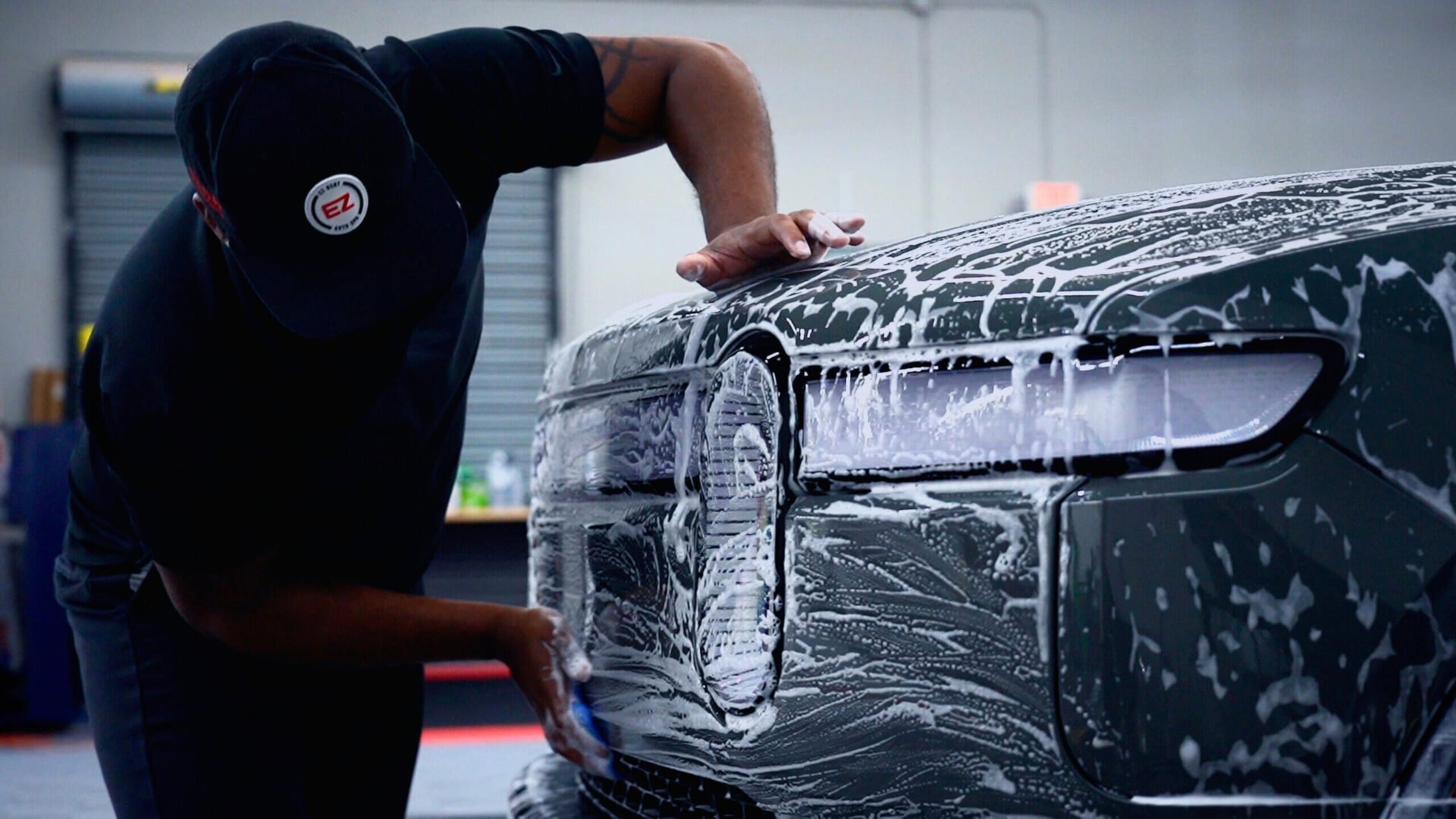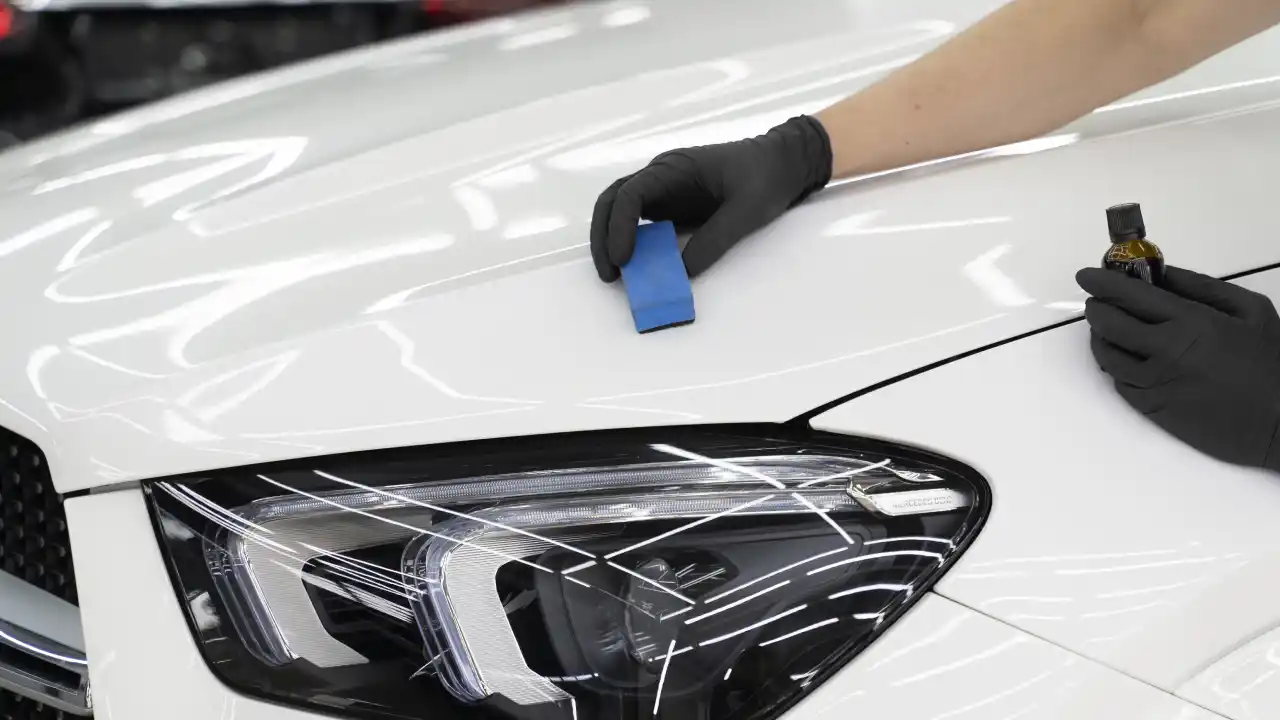Expert Tips for Keeping Your Automobile After Using Ceramic Coating
Expert Tips for Keeping Your Automobile After Using Ceramic Coating
Blog Article
Understanding the Science Behind Ceramic Coating for Boosted Lorry Sturdiness
The scientific research of ceramic finish is revolutionizing vehicle upkeep by offering a powerful guard versus rough ecological aspects. As we discover the elaborate structure and application process of ceramic finishings, we reveal the tricks behind their premium defense and durability (ceramic coating). Exactly how does this contrast to typical approaches, and what implications does it have for vehicle upkeep in the lengthy term?

Composition of Ceramic Coatings
Ceramic coatings are mainly composed of silicon dioxide (SiO2), which is stemmed from natural products like quartz and sand. This compound develops the backbone of the finishing, giving its particular hardness and resistance to environmental elements. Along with SiO2, ceramic coverings typically integrate titanium dioxide (TiO2) for improved UV defense and increased resistance to environmental toxins. These nanocomposite materials create a durable, chemical bond with the vehicle's surface, providing an enduring protective layer.
The formulation of ceramic coatings is a meticulous process where the focus of SiO2 can substantially affect the finishing's performance. Higher SiO2 content normally causes higher toughness and hardness, contributing to the coating's capability to resist scratches and chemical etching. Nevertheless, the balance of components is vital; way too much SiO2 can make the layer weak, while too little can compromise its safety residential properties.
Suppliers may also incorporate extra materials, such as polysilazane, to enhance versatility and simplicity of application. These additives enhance the finishing's hydrophobic residential properties, ensuring water and pollutants bead off the surface easily. This engineered structure underscores the effectiveness of ceramic coverings in securing a vehicle's exterior against a range of negative problems.
Application Process Described
Using a ceramic finish to an automobile includes several crucial steps, each necessary to making certain optimal attachment and efficiency of the protective layer - ceramic coating. The process begins with a thorough laundry and decontamination of the automobile's surface to eliminate dust, gunk, and previous waxes or sealers. This step is crucial as any kind of impurities left on the surface area can hinder the layer's capacity to bond effectively
Complying with the preliminary cleaning, the following action includes polishing the car to eliminate any flaws, such as swirl marks or scratches. Polishing ensures a smooth surface, which is essential for the coating to adhere appropriately and provide a consistent surface. After brightening, a surface preparation spray is made use of to remove any continuing to be deposits and make certain that the surface is totally tidy.

Safety Benefits
Commonly hailed for its phenomenal safety top qualities, a ceramic coating provides numerous benefits that substantially improve automobile longevity. At its core, ceramic coating creates a hard, semi-permanent barrier over a lorry's exterior, which acts as a guard versus various ecological hazards.
In addition, ceramic layers show hydrophobic buildings, indicating they push back water and assist in a self-cleaning result. This attribute lowers the adherence of dirt and mud, streamlining maintenance and cleansing processes. The finish's resistance to chemical etching additionally ensures that the lorry's surface area stays unblemished regardless of exposure to rough cleaner and pollutants.
Along with these protective benefits, the ceramic finishing improves a lorry's aesthetic charm by creating a glossy surface that highlights color depth and clarity. This not only sustains the car's aesthetic appeal but also contributes to its long-term value by preserving the integrity of its exterior in time.
Comparing to Conventional Techniques
Unlike traditional methods of lorry defense, such as waxing or sealants, ceramic coverings supply an even more lasting and long lasting remedy. Where waxes and sealers usually give a momentary layer of security, usually needing reapplication every few months, ceramic finishings form a semi-permanent bond with the lorry's paint. This bond creates a safety layer that is immune to ecological here impurities, UV damage, and minor abrasions.
Traditional waxes are mostly made up of natural parts like carnauba wax, giving a shiny finish yet lacking the durable protective high qualities of ceramic finishings. Sealers, while artificial and offering slightly much better resilience than waxes, still Go Here fall brief in comparison to the resilience and chemical resistance of ceramic finishes. The innovative modern technology of ceramic layers integrates nanotechnology, which permits them to complete microscopic imperfections in the paint surface area, causing a smoother and much more hydrophobic finish.
In regards to application, ceramic finishings call for an even more careful process, frequently requiring professional installment to guarantee optimal efficiency. This contrasts with the relatively uncomplicated application of sealers and waxes, which can be used in the house. The premium protection and visual enhancement given by ceramic finishings justify the investment for those seeking long-lasting vehicle conservation.
Long Life and Maintenance
How does the durability of ceramic finishings convert into convenience of upkeep for car owners? The sophisticated formula of ceramic finishes supplies a durable safety layer on the automobile's surface, which significantly expands the lifespan of the cars and truck's outside finish.
Furthermore, the hydrophobic nature of ceramic finishes allows water and other liquids to bead up and roll off the surface, lugging dust and particles with them. This building decreases the build-up of contaminants, making routine cleansing extra effective and less labor-intensive. Proprietors benefit from a consistently sleek, glossy appearance with marginal initiative. While the finishing itself is resilient, it is not totally maintenance-free. Normal assessments for damage and occasional reapplication are recommended to make sure the protective layer stays undamaged. Therefore, ceramic coatings give a useful balance in between lasting resilience and simplified upkeep for automobile treatment.
Final Thought
Ceramic finishes, with their advanced chemical composition of silicon dioxide and titanium dioxide, provide an awesome barrier versus ecological damages, considerably improving automobile sturdiness. When compared to conventional methods, ceramic layers provide superior defense versus UV rays, oxidation, and chemical etching - ceramic coating.
The formulation of ceramic finishings is a precise process where the concentration of SiO2 can significantly influence the coating's efficiency.Applying a ceramic layer to a vehicle entails several essential actions, each crucial to guaranteeing optimum bond and efficiency of the safety layer.Commonly hailed for its phenomenal safety top qualities, a ceramic finishing provides numerous benefits that considerably improve automobile resilience. The advanced solution of ceramic coverings gives a robust safety layer on the automobile's surface area, which substantially expands the lifespan of the vehicle's exterior finish.Ceramic finishes, with their advanced chemical structure of silicon dioxide and titanium dioxide, useful link provide a formidable barrier versus ecological damages, considerably boosting car longevity.
Report this page